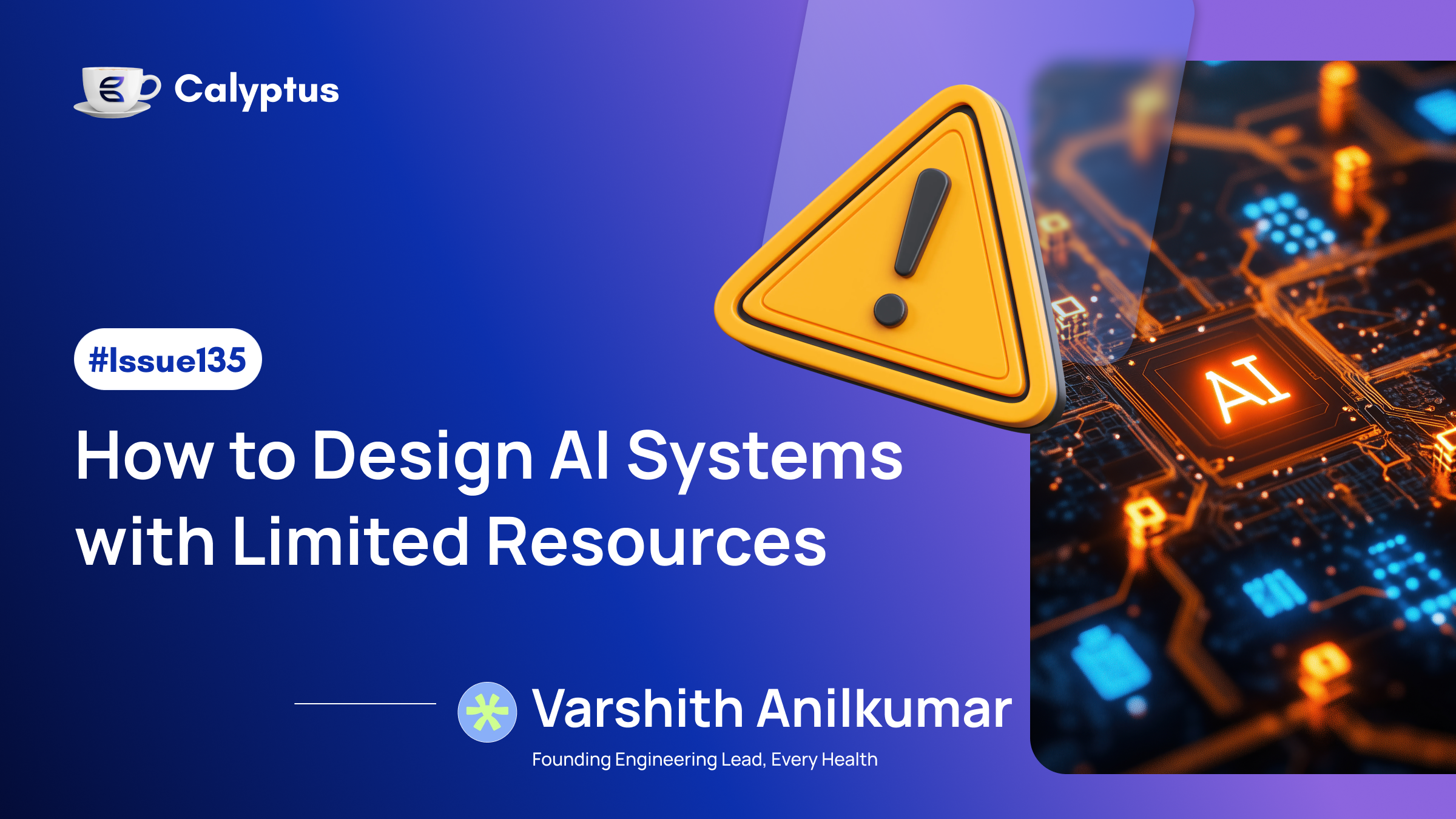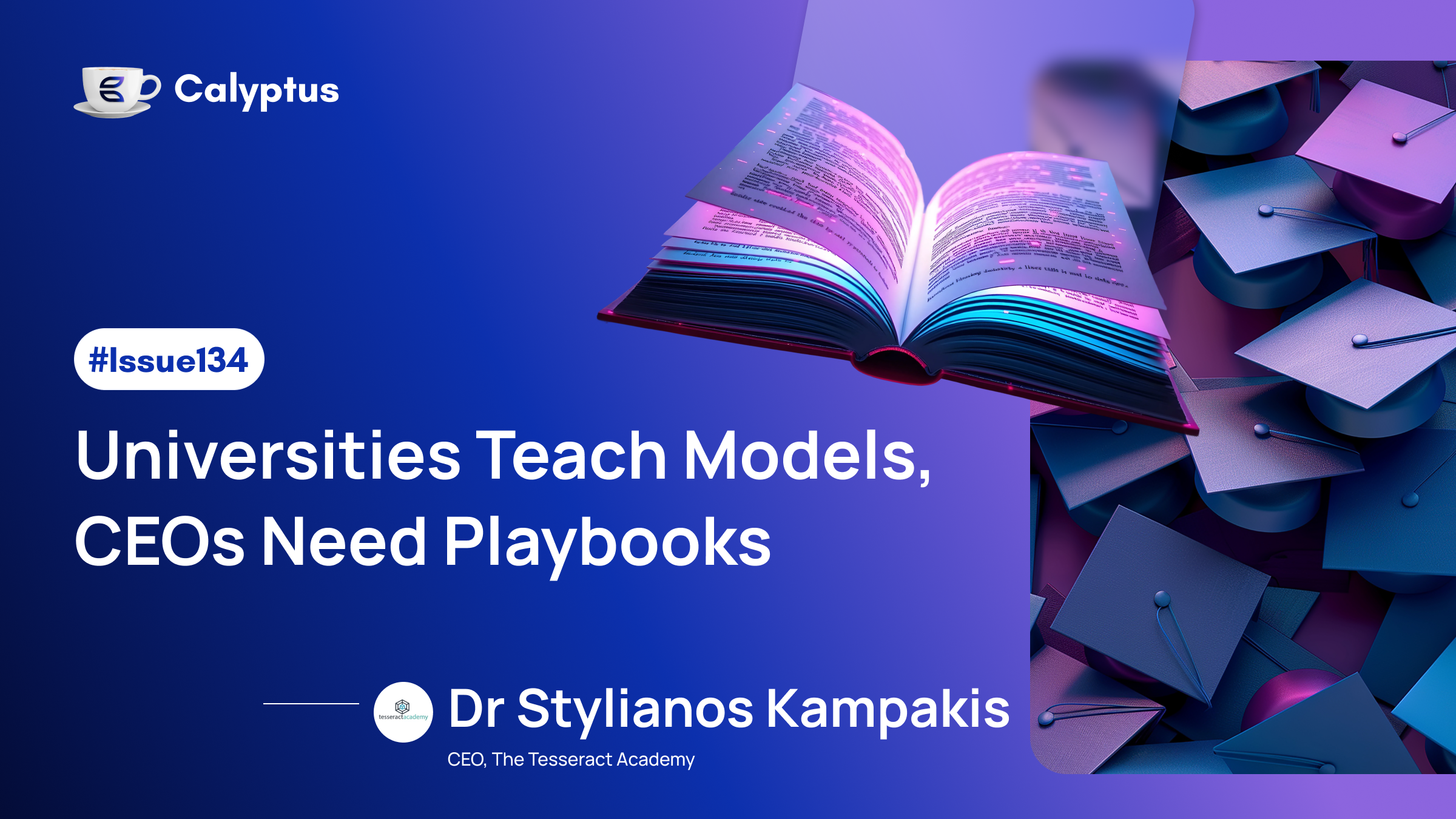In this edition of Coffee with Calyptus, we’re joined by Leopold Neuerburg, Managing Director at BuildingRadar. With a background in optimizing large-scale procurement processes and AI-driven solutions, Leopold shares insights into how AI is revolutionizing sales operations in the construction industry. From transforming CRMs into proactive "Systems of Action" to eliminating friction in sales workflows, Leopold reveals how BuildingRadar’s AI platform helps teams win projects and boost margins.

Before founding Building Radar, you did everything from restructuring a $3 billion procurement process at Accenture to optimizing an €82M supply chain at Tata Steel. How does analyzing bottlenecks in oil & gas supply chains prepare you for building an AI platform that identifies construction projects for sales teams?
I learned that data without context is useless. You can have perfect ERP data, but unless you translate it into actionable insight, it changes nothing. It’s only great to have all this data, if your org is also ready to act on it and willing to embed these processes.
That’s exactly the philosophy behind Building Radar. The construction industry also suffers from fragmented information in tenders, email inboxes, CRM systems or notepads. We apply AI to bring full visibility to upcoming projects and then transform that visibility into action for sales teams.
In other words, Building Radar is essentially a supply-chain visibility platform for revenue: we know where demand will arise, eliminate friction in how sales teams access it, and ensure that the right product reaches the right project at the right time. Ultimately, this brings our customers in the unique spot to win projects with higher margins.
Building Radar has been running for nearly 11 years. You've survived multiple AI winters and summers, from pre-deep learning to the LLM explosion. How has the journey been and what's the one strategic decision you made in 2015-2017 that would have been completely different if you started Building Radar today with GPT-4 and modern AI tools?
Crazy journey with many ups and downs. When we started in 2014, “AI” mostly meant classical machine learning (logistic regression, NLP etc.). We spent over €4M and several years building data pipelines and annotating training sets that can be automated with a single API call today.
If I could redo one strategic decision from that early period, it would be our focus on building proprietary data infrastructure too early. Back then, the logic was: “own the pipeline, own the moat.” Today, with LLMs and modern AI tooling, I would instead start from user workflows and instant value creation. LLMs then can orchestrate data discovery and automation across sources. Now we only build proprietary layers where we create unique differentiation. But when we started AI was not a thing and you had to do everything from scratch.
In short, if we started today, we’d go top-down: user first, AI-native workflow from day one (instead of built bottom-up: data first, product later.)
Building Radar uses AI to identify construction projects and facilitate sales growth. How are you using AI agents or automation internally at Building Radar?
We use AI agents in two main areas: increase customer value and speed up internal operations:
- For customers, our AI agents act as revenue copilots. They surface early-stage projects, identify relevant contacts, and even help draft outreach messages or book meetings automatically. We’re moving toward what we call a “System of Action”: we are not just surfacing data, but triggering the right sales action at the right time.
- Internally, we use agents for all sorts of processed from sales enablement to operations automation. This includes summarizing customer calls, leverage no-code tools for product discovery or supporting CSMs in operational work like ticket management or even resolving tickets. This helps teams to focus on high-leverage work.
Ultimately, AI is now part of every area of our business.
You worked with McKinsey on a 40,000-employee placement recommendation project and at Holtzbrinck Digital driving 6M users in traffic growth. When enterprise clients ask you how Building Radar's AI will transform their sales process, how do you approach the question?
I flip the question: instead of asking how AI will transform sales, we ask which part of sales they currently struggle with the most in terms of time spent.
Turns out, our customers spent 60-70% of time on non-selling activities like documenting info in their CRM, researching clients or preparing answers to emails or tenders. Building Radar’s AI focuses on removing all that.
Take classic CRMs for example like Hubspot, Salesforce or Microsoft Dynamics: they are outdated “System of Records”. They only take the data from a user, but they do nothing with this data. The main reason users insert their data in these classic CRMs is because their boss asks them to do so. But the CRM does not give back. However, with AI the System can now guide the user much better: e.g. based on the provided data, suggest the best next action to win the deal.
We guide our clients through this transformation from System of Records into a System of Actions. The result isn’t just efficiency; it’s a cultural shift. Teams move from reactive, gut-driven selling to proactive, data-driven growth. And that’s what truly transforms revenue generation.
We hope you enjoyed this edition of Coffee with Calyptus. Stay curious, stay inspired, and keep building what matters. Explore more editions and insightful articles at https://www.calyptus.co/blog.



